Have you ever heard of Salak, also known as Snake Fruit? Native to Indonesia, Malaysia, and other parts of Southeast Asia, this fascinating fruit gets its name from its reddish-brown scaly skin that resembles a snake. Beneath that tough exterior lies a sweet, tangy, and aromatic flesh — one of the most exotic tropical treats you can grow at home.
If you’ve ever wondered how to grow a Salak plant from seeds, this detailed guide inspired by the video “How to Grow Salak Plant from Seeds (Snake Fruit)” will walk you through every step. From seed selection and germination to transplanting and care, you’ll learn everything you need to successfully cultivate this remarkable tropical fruit in your garden or even in a large container.
What Is the Salak (Snake Fruit) Plant?
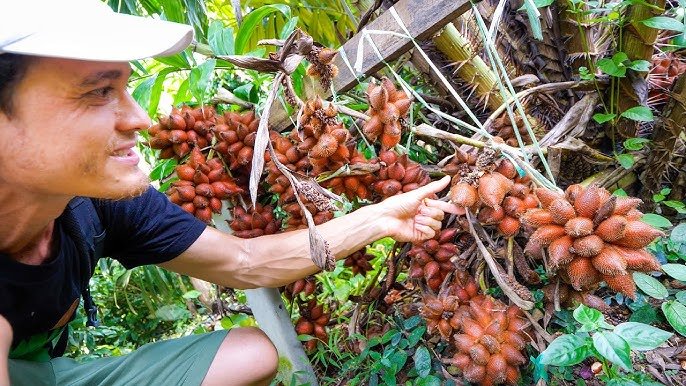
The Salak palm (Salacca zalacca) is a tropical fruiting palm that belongs to the Arecaceae (palm) family. It’s a short, clumping palm that rarely grows taller than 6–8 feet. Its long, feather-like leaves are covered in sharp spines, but they protect one of nature’s most unique fruits — the Snake Fruit.
Each tree produces clusters of reddish-brown fruits at its base. The skin looks scaly like a snake’s, but once peeled, you’ll find a firm, creamy, and sweet flesh inside, often with a pleasant tang. The taste is a combination of apple, banana, and pineapple, making it a prized delicacy across Southeast Asia.
There are several popular varieties, including:
- Salak Pondoh (Indonesia) – Sweet and aromatic
- Salak Bali (Bali, Indonesia) – Juicy with a mild sour flavor
- Salak Gula Pasir – Considered the sweetest variety
- Salak Thai (Thailand) – Larger and often cultivated commercially
Growing Salak from seed takes patience, but the process is fascinating and deeply rewarding.
Step 1: Collecting and Preparing Salak Seeds
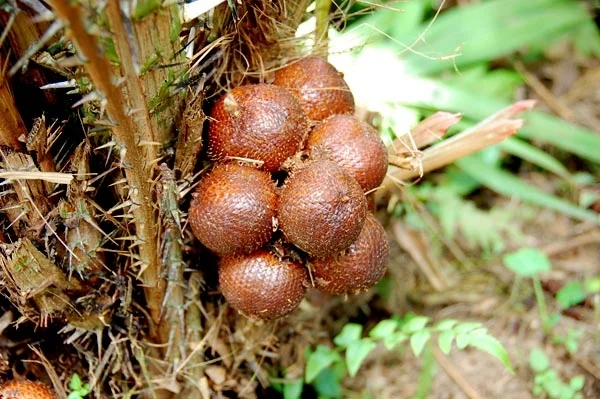
You can start growing Salak right from the seeds inside the fruit. However, fresh seeds are crucial — old or dried seeds will have very low germination rates.
How to Prepare Salak Seeds:
- Choose Ripe Fruits: Select fully ripe Salak fruits with a rich reddish-brown skin. The riper the fruit, the better the seed quality.
- Extract the Seeds: Carefully peel the fruit and remove the large, shiny brown seeds from the flesh.
- Clean the Seeds: Rinse the seeds under running water to remove all fruit residue. Leftover pulp can attract fungus during germination.
- Soak the Seeds: Soak them in clean water for 24 hours to soften the outer shell and promote quicker sprouting.
Some gardeners also recommend lightly scratching or nicking the outer seed coat with a file to speed up germination — but do it carefully to avoid damaging the inner seed.
Step 2: Germinating the Seeds
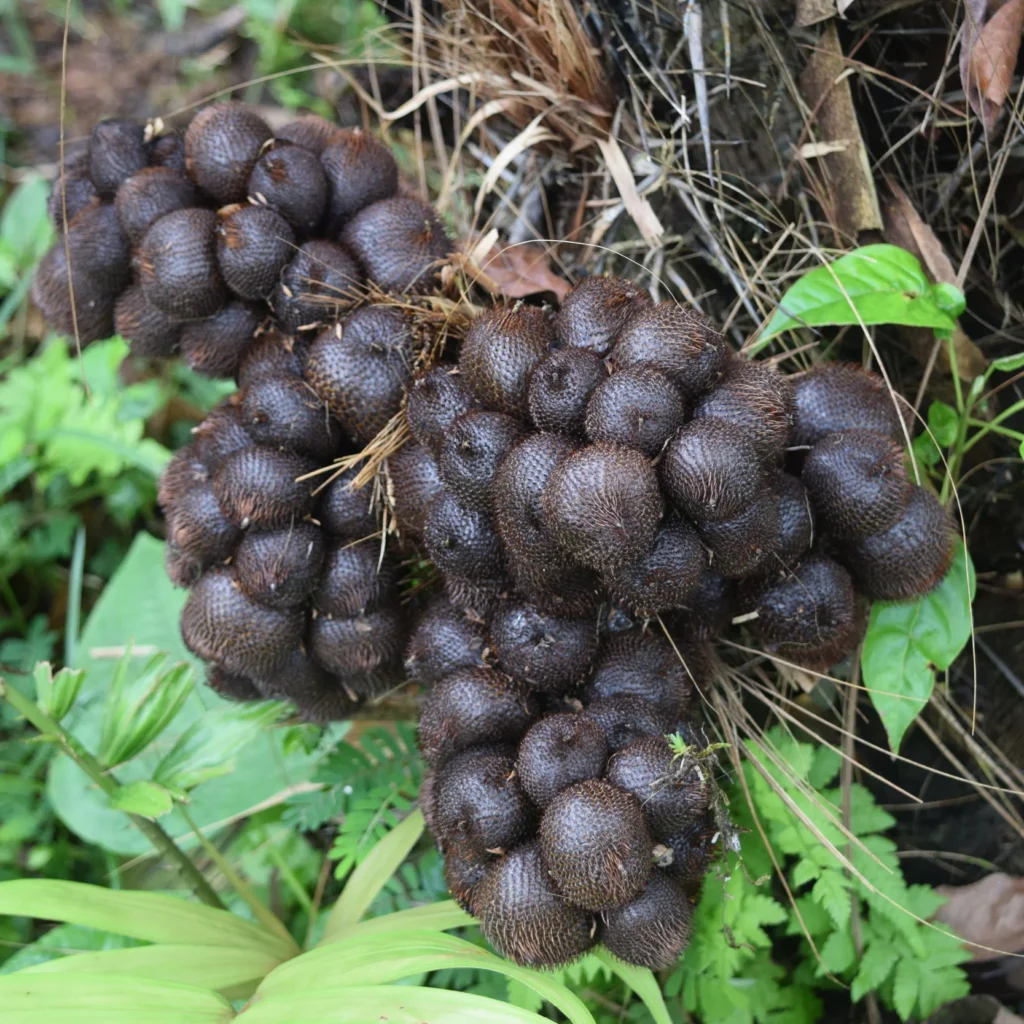
Salak seeds take time to sprout, but with proper conditions, they can germinate successfully in 4–8 weeks.
Best Germination Method:
- Prepare a Germination Tray or Plastic Bag:
Use a shallow tray, seedling container, or even a resealable plastic bag. - Use a Moist Medium:
Mix 50% coco peat and 50% sand or perlite. This ensures good drainage and moisture balance. - Plant the Seeds:
Place the seeds horizontally about 1 inch deep into the medium. - Moisture & Warmth:
Keep the medium consistently moist (not soggy). Cover with plastic wrap or close the bag to retain humidity. - Ideal Temperature:
Maintain a warm environment — around 28°C–32°C (82°F–90°F) — to trigger germination.
Keep the setup in a bright spot but away from direct sunlight. Check every few days to ensure the medium stays moist.
Step 3: Transplanting Seedlings
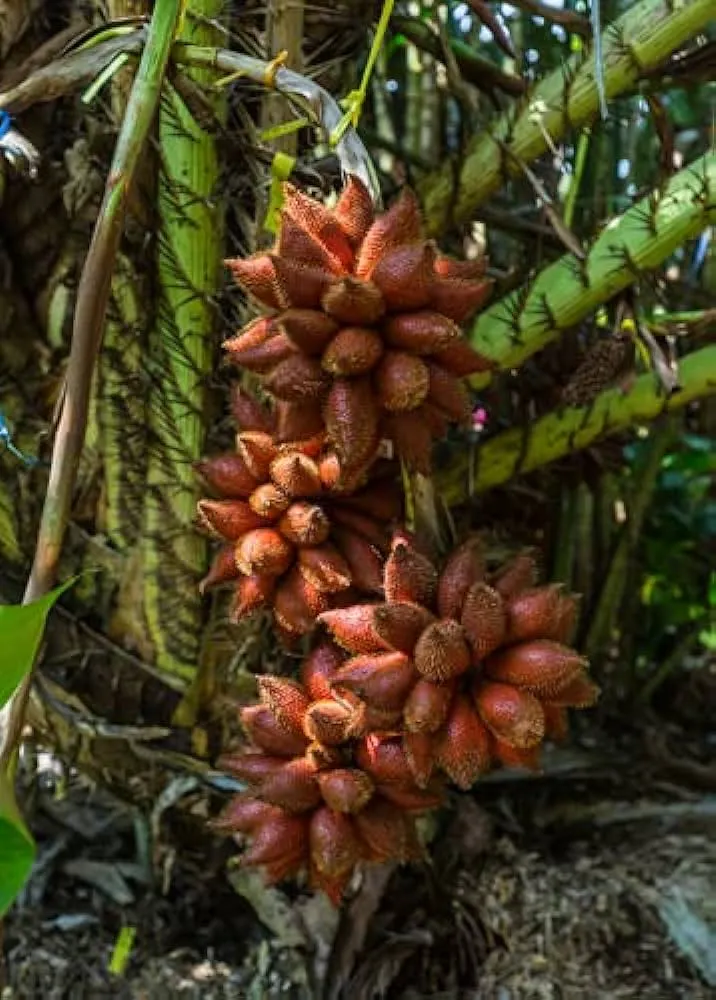
Once the seedlings reach 3–5 inches tall and develop small roots, they’re ready for transplanting into pots or the ground.
Transplanting Steps:
- Prepare the Soil Mix:
Combine:- 40% garden soil
- 30% compost or cow dung manure
- 20% sand for drainage
- 10% coco peat or leaf mold
- Choose a Pot:
Start with a 10–12 inch deep pot with drainage holes. Salak palms have fibrous roots that prefer loose, airy soil. - Plant Carefully:
Gently remove the seedling from the germination medium without disturbing its delicate roots. Place it in the pot and cover the roots with soil. - Water Thoroughly:
After transplanting, water the plant deeply and place it in partial shade for about a week to help it recover.
Once the young plant stabilizes, move it gradually to a brighter spot with filtered sunlight.
Step 4: Light and Temperature Requirements
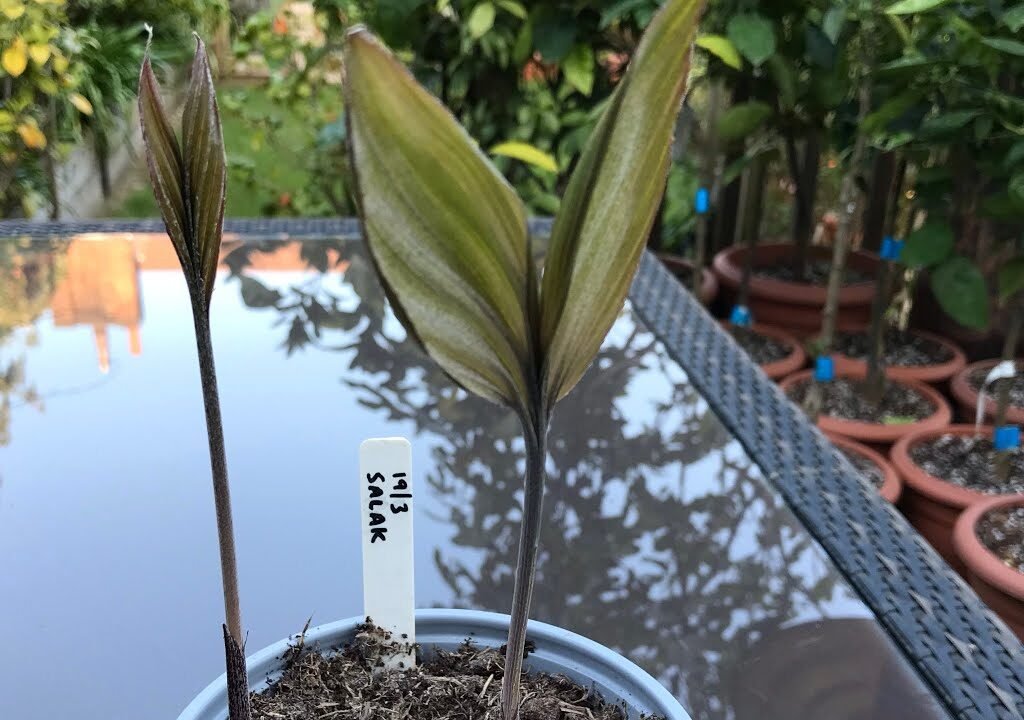
Salak is a tropical plant, so it thrives in warm, humid, and partially shaded environments.
- Sunlight:
Young plants prefer partial shade. As they mature, they can tolerate 4–6 hours of filtered sunlight daily. Direct scorching sunlight may burn the leaves. - Temperature:
Ideal range: 25°C to 35°C (77°F to 95°F).
Avoid exposure to cold or frost — temperatures below 15°C (59°F) can slow growth or cause damage. - Humidity:
Keep humidity above 60%. In dry climates, mist the leaves occasionally or use a humidity tray.
Step 5: Watering and Moisture Management
Snake fruit plants love consistently moist soil, much like their native rainforest habitat. However, avoid waterlogging, which can lead to root rot.
- Water regularly, especially during hot months. The soil should never dry out completely.
- Use mulch (like coconut husk, straw, or dry leaves) around the base to retain moisture and regulate soil temperature.
- During monsoon or high-humidity seasons, reduce watering slightly to prevent fungal infections.
Step 6: Fertilizing for Healthy Growth
To encourage strong root development and fruiting later, Salak plants need regular feeding with organic nutrients.
Fertilizer schedule:
- For young plants (first year):
Apply compost or well-rotted cow dung once a month. - For mature plants:
Use organic fertilizers such as vermicompost, bone meal, or banana peel fertilizer every 2–3 months. - For fruiting trees:
During flowering and fruiting stages, feed with potassium-rich fertilizer (wood ash, seaweed extract, or NPK 10-10-20) to enhance fruit quality.
Avoid excessive nitrogen — it encourages leafy growth but delays fruiting.
Step 7: Pruning and Maintenance
Salak palms naturally form dense clumps, and their leaves are covered in sharp spines. Regular maintenance makes the plant manageable and safe to handle.
Tips for Pruning:
- Remove dead or old leaves at the base.
- Trim away excess offshoots or suckers to direct the plant’s energy toward fruit production.
- Use protective gloves and long sleeves when pruning — the thorns can be sharp!
Keep the base of the plant clean and well-ventilated to discourage pests and fungal problems.
Step 8: Pest and Disease Control
Although Salak is relatively hardy, it can sometimes attract pests like aphids, scales, and mealybugs. Here’s how to manage them organically:
- Neem oil spray: Mix 5 ml neem oil with 1 liter of water and spray weekly.
- Soap spray: Use mild liquid soap to remove small insects.
- Avoid stagnant water: This prevents fungal root infections.
If grown in pots, periodically change the topsoil layer to reduce the risk of disease buildup.
Step 9: Flowering and Fruiting
Salak palms are dioecious, meaning male and female flowers grow on separate plants. To get fruits, you’ll need at least one male and one female plant for pollination.
- Flowering Time: Usually begins 3–5 years after planting.
- Pollination: Hand pollination can improve fruit set, especially in potted or indoor plants.
- Fruiting: Fruits develop in clusters at the base of the plant and take about 6–7 months to mature after flowering.
Each fruit contains one to three large seeds and a sweet, crisp flesh that can range from mildly acidic to sugary, depending on the variety.
Step 10: Harvesting and Enjoying Your Snake Fruit
You’ll know it’s harvest time when the fruits turn deep brownish-red and the scales look shiny. The fruit should feel firm but not hard.
Harvesting Tips:
- Wear gloves — the spines on the plant are sharp.
- Cut the fruit clusters gently from the base.
- Consume fresh or use in jams, pickles, or desserts.
Salak fruit is rich in fiber, vitamin C, and antioxidants, making it not only delicious but also healthy. It’s known to improve digestion and boost energy naturally.
Bonus: Growing Salak in Containers
Even if you don’t have space for a full garden, you can still grow Salak in large containers on your terrace or balcony.
- Use a 25–30 inch deep container with good drainage.
- Place in bright filtered sunlight.
- Keep the soil consistently moist.
- Add compost every 30–45 days.
- Repot every 2–3 years to refresh soil and allow root expansion.
Container-grown Salak may be smaller but can still produce fruits when properly pollinated.
Final Thoughts
Growing Salak (Snake Fruit) from seeds is a slow but highly rewarding process. From the moment your seeds sprout to the day you harvest those glossy, snake-like fruits, every stage offers a sense of wonder and accomplishment.
The key to success is patience, consistent care, and a tropical-like environment. Whether you live in a humid region or use containers in a greenhouse, you can enjoy the beauty and bounty of this unique palm tree right at home.
With the right mix of love and attention, your small seed will eventually transform into a fruit-bearing Salak palm — a true tropical gem that’s as beautiful as it is delicious.
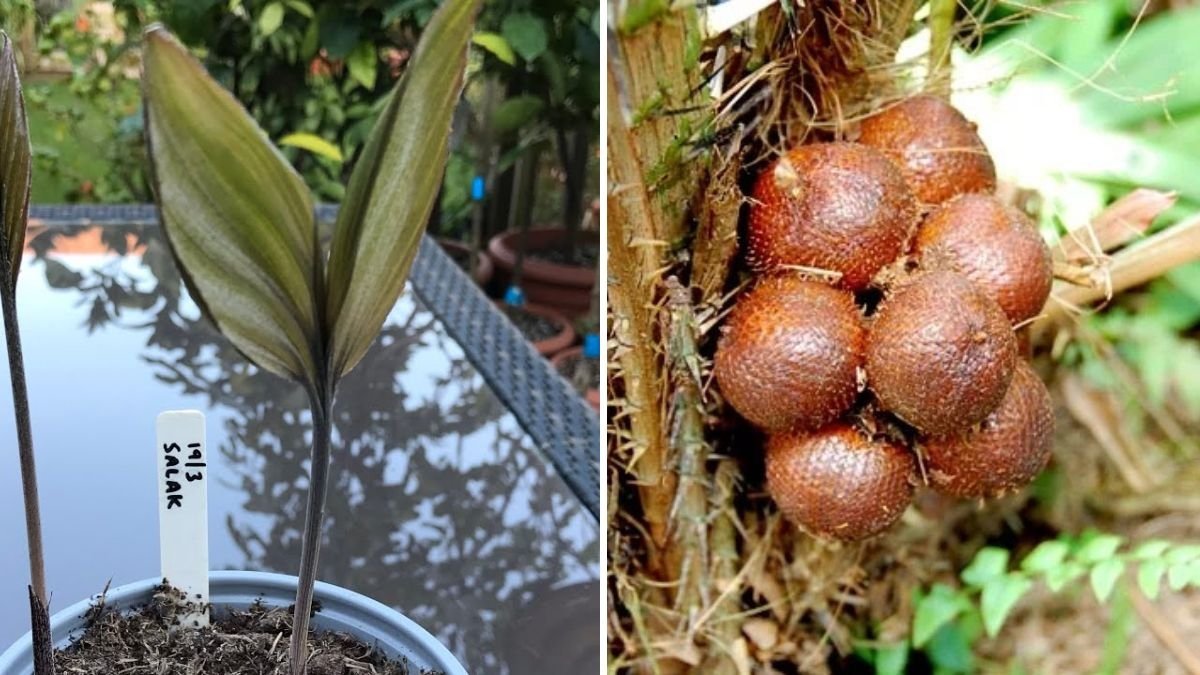
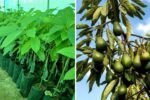
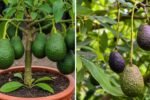
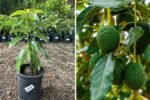
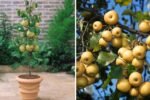
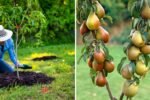
Leave A Comment